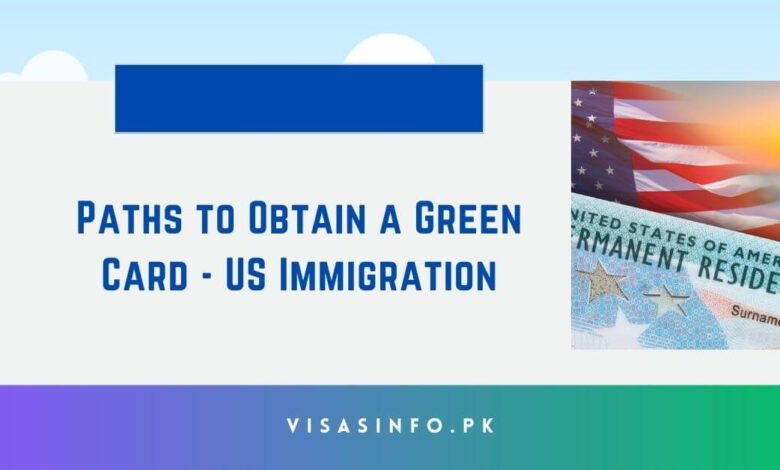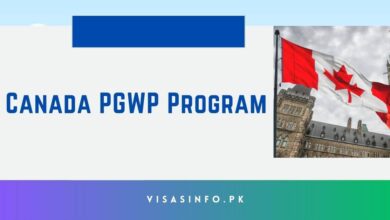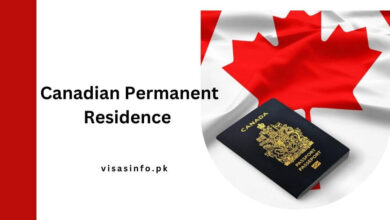Paths to Obtain a Green Card 2024 – US Immigration

Within the intricate labyrinth of immigration regulations, there is a less-traveled path that can serve as a lifeline. The purpose of this is to elucidate the intricacies of the T-visa for individuals who have experienced the harrowing consequences of labor exploitation. It emphasizes the potential for the visa to provide undocumented workers who have been the victims of coercion, fear, or force with legal status and a pathway to a green card.
As we explore the intricacies of the T-visa, we will address frequently asked questions, dispel misconceptions, and offer insight into the application process, thereby ensuring that individuals seeking a way out of the Shadows have a comprehensive understanding.
Understanding the T-Visa
In this introductory chapter, we embark on an expedition to understand the T-visa’s history, objectives, and qualifying requirements. The TVA was established to alleviate the suffering of immigrants in the United States who had been the victims of severe human trafficking.
Contrary to widespread belief, this form of trafficking is not restricted to physical confinement. It encompasses situations in which individuals are compelled to provide labor or services as a result of feeling intimidated, pressured, or under duress. Reading the T-VISA will enable readers to comprehend the potential of this legal system as a tool for justice.
The Dynamics of Exploitation
It is imperative to comprehend the TVA’s significance by comprehending the mechanisms of exploitation that undocumented workers frequently encounter, including intimidation tactics related to immigration and IRS concerns, denied breaks, and underpaid wages. The workplace can become a sanctuary for dread and compulsion.
The psychological repercussions of being compelled to labor in harsh environments are the primary focus of this chapter, which investigates the various forms of exploitation. We aim to humanize the challenges faced by individuals who are seeking asylum using true accounts.
Overcoming Misconceptions
The prevalence of false beliefs is one of the primary impediments that frequently deters individuals from investigating the TVA option. This chapter methodically addresses several common fallacies, including the notion that physical detention is a prerequisite for obtaining a T-visa. Debunking myths and clarifying the requirements will provide readers with a more realistic understanding of how the TVA can be a viable solution, even in cases where the abusive employer has passed away.
Eligibility
Is it still feasible to qualify for a TVA if the abusive employer has passed away? This is a question that is frequently posed. This chapter delves into the intricacies of the law, emphasizing that the individual’s experience of grievous human trafficking is of paramount importance. Despite the absence of a living perpetrator, the T-visa’s assertion remains valid.
By analyzing case law precedents, we demonstrate that the law prioritizes the presence of trafficking over the offender’s current circumstances.
Establishing Continued Presence
To obtain an e-Visa, applicants must demonstrate that their presence in the United States is directly associated with the trafficking incident. In this chapter, the diverse methods of establishing a continuous presence are analyzed, ranging from the physical health effects that necessitate ongoing medical care to the mental health impacts, which include anxiety and sorrow.
We also investigate legal matters, such as the pursuit of justice through legal channels to fortify the connection between the historical experience of human trafficking and the current situation.
Navigating the Application Process
The success of obtaining a T-visa is contingent upon your capacity to navigate its intricacies. This chapter functions as a valuable resource, providing comprehensive instructions on how to construct a compelling argument. Readers will gain valuable insights into the intricate Journal Journey that leads to the acquisition of a T-Visa, including the process of accumulating evidence, composing an affidavit, and consulting with legal professionals.
Responding to Audience Inquiries
This chapter provides comprehensive responses to frequently inquired questions regarding the causes of individual hearing date modifications, canceled biometric sessions, and inconsistencies in the online portal. Readers will be better equipped to surmount the challenges associated with the immigration process by providing them with practical advice and elucidating the intricate bureaucratic procedures.
The Future Beyond T-Visa
The opportunities for individuals who have been granted a T-Visa are the subject of this chapter. This encompasses the anticipated three-year Pathway to a Green Card, legal status, and access to a work permit. By shedding light on the broader implications of the T-visa, readers can imagine a world in which justice functions as a stepping stone toward greater prospects in the United States, rather than merely a legal response.
Check Also: Green Card Interviews Waived
Empowering Through Knowledge
The most significant lessons learned are emphasized in this chapter, with a particular emphasis on the importance of empowerment and information. By providing individuals with a comprehensive understanding of the T-visa, they will be able to make informed decisions, advocate for their rights, and pursue justice.
The chapter concludes with a call to action, encouraging readers to seek legal counsel, share their experiences, and participate in the collective effort to effect positive change for exploited workers in the United States, following the successful negotiation of individual hearings and travel restrictions.
Benefits of Paths to Obtain a Green Card
- Permanent Residency: A Green Card grants individuals the legal right to reside and work in the United States indefinitely, granting them permanent residency.
- Employment Prospects: Green Card holders are entitled to work for any employer in the United States, which provides them with a broader selection of employment opportunities and the potential for career advancement.
- Social Benefits Accessibility: Permanent residents are eligible for a variety of social benefits, such as Medicaid, Social Security, and other federal and state assistance programs.
- Educational Benefits: Green Card holders frequently qualify for in-state tuition rates at public colleges and universities and have access to financial assistance and scholarships.
- Travel Flexibility: Green Card holders are permitted to travel in and out of the United States with fewer restrictions than visa holders, although they are required to satisfy residency requirements.
- A Green Card: is a preliminary stage in the process of obtaining U.S. citizenship. After satisfying residency and other criteria, permanent residents are eligible to file for citizenship, which grants them the right to vote and actively engage in civic life in the United States.
- Family Sponsorship: Green Card holders can sponsor specific family members for their own Green Cards, which aids in the reunification of families and provides them with comparable benefits.
- Legal Rights: Permanent residents are granted access to the judicial system and are safeguarded by U.S. laws, which are similar to those of U.S. citizens.
- Stability and Security: Possessing a Green Card offers stability and security, thereby reducing the dread of deportation and enabling long-term planning and investment in the American economy.
- Business Opportunities: Temporary visa holders are subject to limitations that prevent Green Card holders from establishing their enterprises or investing in existing ones.
Immigration Court System
This chapter explores the intricacies of Immigration Court procedures, offering a deeper understanding of the factors that result in hearing date modifications for particular cases and strategies for surmounting these challenges. Due to court-related logistics, including the volume of cases the court is managing and the availability of justices, individuals frequently experience delays or modifications to their scheduled hearings.
Our objective is to provide readers with a more comprehensive comprehension of the variables that influence specific hearing dates while acknowledging the constraints of the Immigration Court System. We analyze the concepts of prosecutorial discretion and administrative closure, detailing scenarios in which the Department of Homeland Security (DHS) may agree to dismiss charges against individuals who are at risk of deportation.
The chapter also addresses the impact of travel restrictions on individuals whose immigration cases are still outstanding. Traveling can be particularly significant for individuals who have urgent needs or family issues. We discuss the concept of advanced parole and the circumstances under which an individual may be eligible to petition for it.
The information pass appointment provides comprehensive guidance on how to expedite the processing of travel documents, including the process of applying for emergency advance parole or requesting an expedited appointment. This chapter aims to enable individuals to more effectively navigate the legal system by offering a comprehensive understanding of the relationship between individual proceedings and travel limitations.
Navigating Marriage with an Undocumented Partner
In this chapter, the intricacies of marriage-based immigration for US residents who wish to marry non-documented individuals are thoroughly reviewed. We address the significance of language usage in response to inquiries and suggest the use of terms such as “undocumented” in place of “illegal.”
The purpose of this terminology modification is to underscore that individuals are not defined by a piece of paper and to humanize them. The chapter provides a comprehensive explanation of the process of marrying an individual who lacks legal status. It underscores the importance of the admission process to the United States.
The guidance provided is practical and pertains to inspection and admittance. It delineates the necessary documentation and the interview process that couples may be required to undergo, as immigration laws prioritize individuals who have legal entry. The chapter humanizes the immigration experience by illustrating that love knows no bounds through the use of real-life stories and examples.
The objective of this chapter is to provide couples with the necessary tools to navigate the complexities of the US immigration system by providing them with enlightening information regarding the marriage-based immigration process.
Unraveling the VAWA Option
This chapter discusses the obstacles associated with transitioning from marriage-based immigration to the Violence Against Women Act (VAWA) during removal proceedings. It is important to note that filing for VAWA does not necessarily terminate removal proceedings; rather, it may lead to administrative closure or prosecutorial discretion.
The subtleties of utilizing VAWA as a legal remedy for individuals who have experienced violence or abuse in their relationships are thoroughly explained. The challenges and potential outcomes of this transition are underscored by real-world examples and case studies. The chapter emphasizes the importance of obtaining legal counsel to effectively navigate the intricacies of VAWA petitions and removal proceedings.
By demystifying the VAWA option, this chapter aims to empower individuals who have experienced maltreatment in relationships to pursue legal avenues for justice and immigration relief.
conclusion
The T-visa as a Lifeline for Abused Workers investigation is a testament to the tenacity, valor, and fortitude of individuals who have experienced abuse. We believe that this provides individuals with a sense of empowerment as we navigate the intricacies of immigration law and provide them with practical advice. In pursuit of a more promising future and justice in the United States
Frequently Asked Questions:
-
What is the fastest path to get a green card?
Employment-based (EB) visas are one of the fastest and most efficient ways to get a U.S. Green Card. The EB-5 visa is often the quickest route. EB-5 investors can self-sponsor, meaning they do not require a labor certification or proof of employment.
-
What are immigration pathways?
Immigrant pathways provide opportunities to work in the United States on a more permanent basis for a variety of reasons. They provide lawful permanent residence (Green Card), which can eventually lead to U.S. citizenship.
-
What qualifies a person for a green card?
To qualify for a Green Card, you must be admissible to the United States. INA 212(a) lists grounds of inadmissibility, or reasons why you might be inadmissible. In general, USCIS can only approve your Green Card application if none of the grounds of inadmissibility apply to you.



